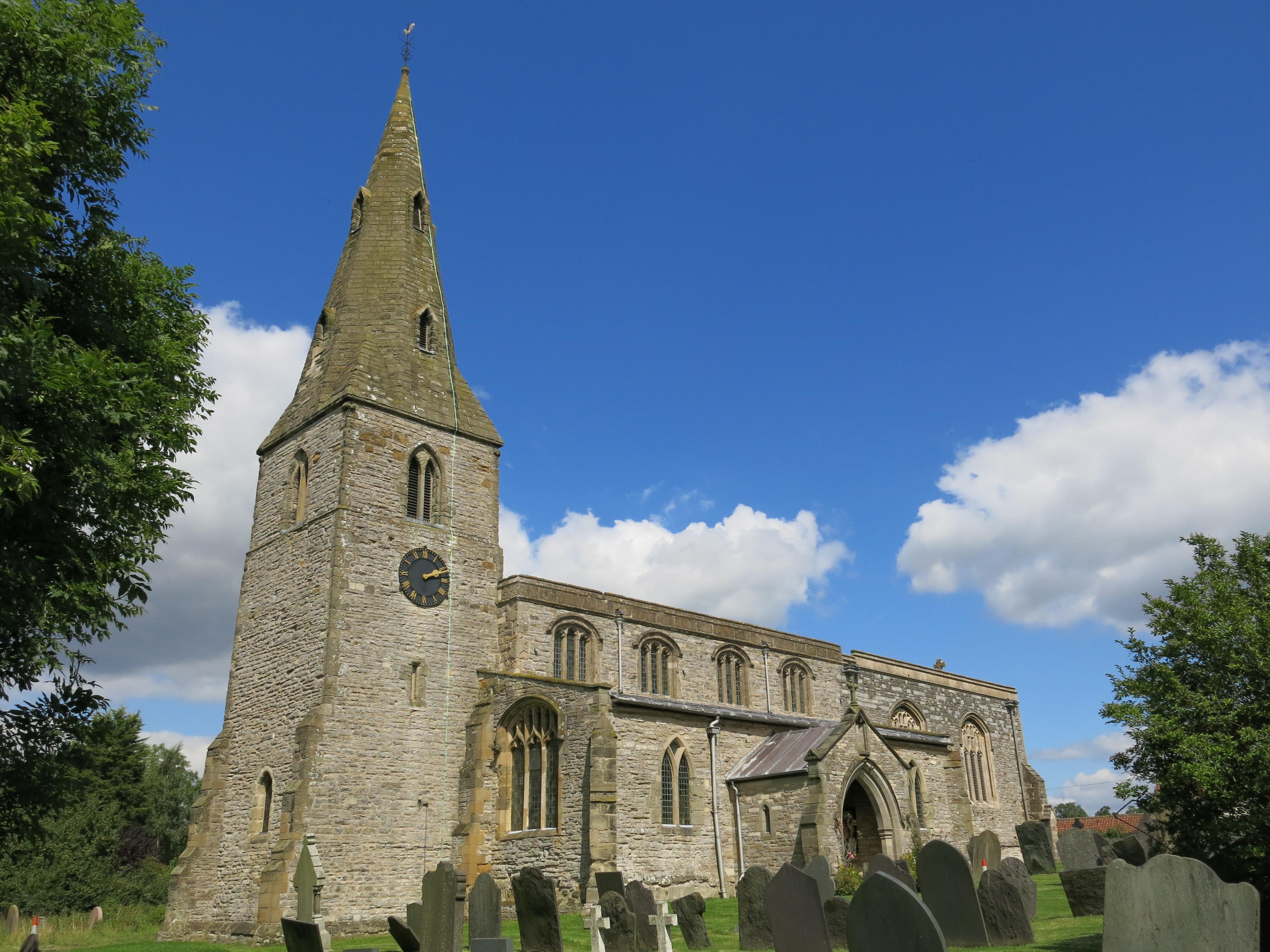St Luke
Broughton Sulney, Nottinghamshire
St Luke’s is a small village church built of brown ironstone and has a heavily weathered appearance.

The church and its chantry chapel date from the 13th century, the chapel contains nationally important alabaster tombs.
Willoughby on the Wolds, Nottinghamshire
The church of St Mary & All Saints lies in a large rectangular churchyard on the north side of the village. The tower of the church is 13th century and built mainly of the local lias limestone. The 14th century broach spire is of green grey triassic sandstone. The tower houses a ring of 6 bells, all save the treble (1965) cast by Taylors in 1856. The arcades and other elements of the church date from the 13th century, although with substantial 14th and 15th century alterations. The chancel was substantially rebuilt in the 1890s. The south porch dates from a 1908 rebuild and period photographs show the porch before this date with collapsed door arch.
Located on the north side of the nave, the chantry chapel and its alabaster tombs are the most distinguishing features of St Mary & All Saints. The chapel, dedicated to St Nicholas, dates from the 13th century and contains funerary monuments to the Willoughby family, as well as a 13th century aumbry in the north wall and arched piscina in the south wall. However it is the tombs that attract most attention.
There are two 13th century effigies of ladies in wimples and an effigy of Sir Richard de Willoughby and his wife, both with feet on lions and heads on pillows. That to Sir Richard de Willoughby (d1362), a senior judge in the days of Edward III, is of a recumbent figure in pleated dress. The alabaster tomb of his son Sir Richard (d1369) is of a recumbent knight with head resting on a visor and feet on a dog. The alabaster tomb of Sir Hugh de Willoughby and his second wife Margaret Freville depicts two figures in prayer, he a knight with feet resting on a lion and head on a visor, and she with feet resting on a dog and head on a pillow supported by angels. In England’s Thousand Best Churches, Simon Jenkins writes with enthusiasm of this particular tomb, describing the rose Madonna on the eastern side as 'a miniature masterpiece.'
Broughton Sulney, Nottinghamshire
St Luke’s is a small village church built of brown ironstone and has a heavily weathered appearance.
Bunny, Nottinghamshire
Often referred to as the Cathedral of the Wolds as it is the largest church building in south Nottinghamshire at over 140 foot long including the tower.
Plumtree, Nottinghamshire
Appearances can be deceptive as, although rather unprepossessing on the outside, when you enter St Mary's church you’ll be greeted with the glorious colours of the ceilings, panelling and stained glass windows.